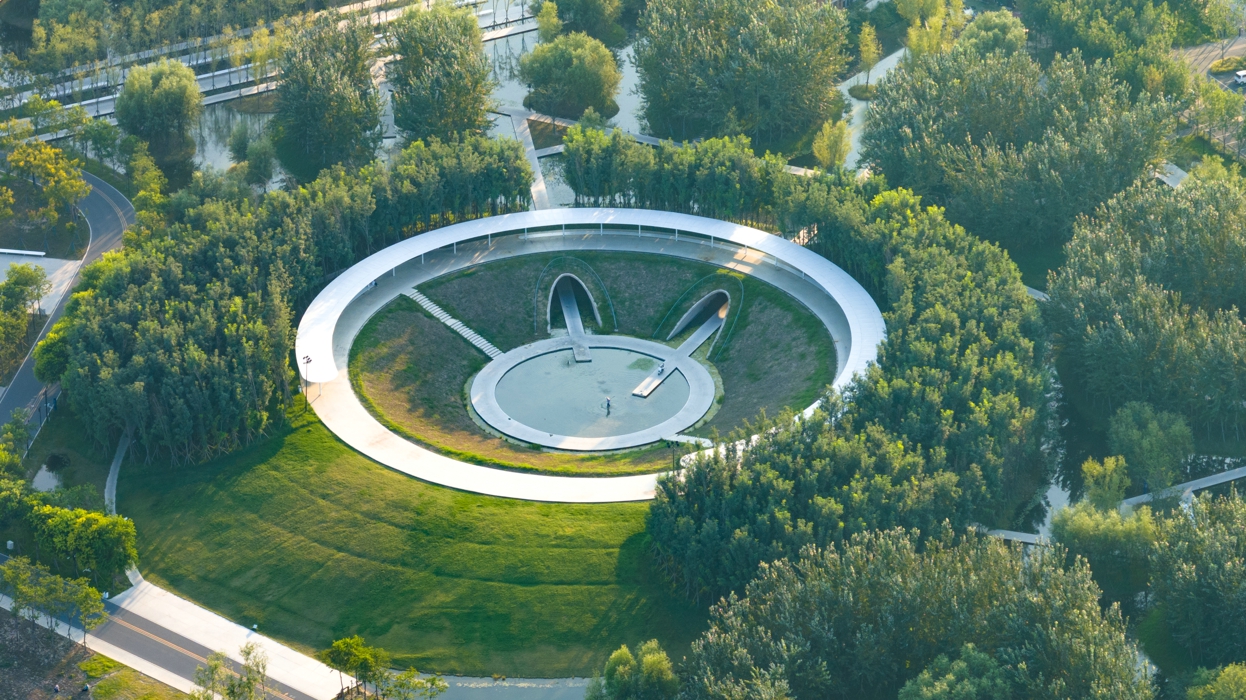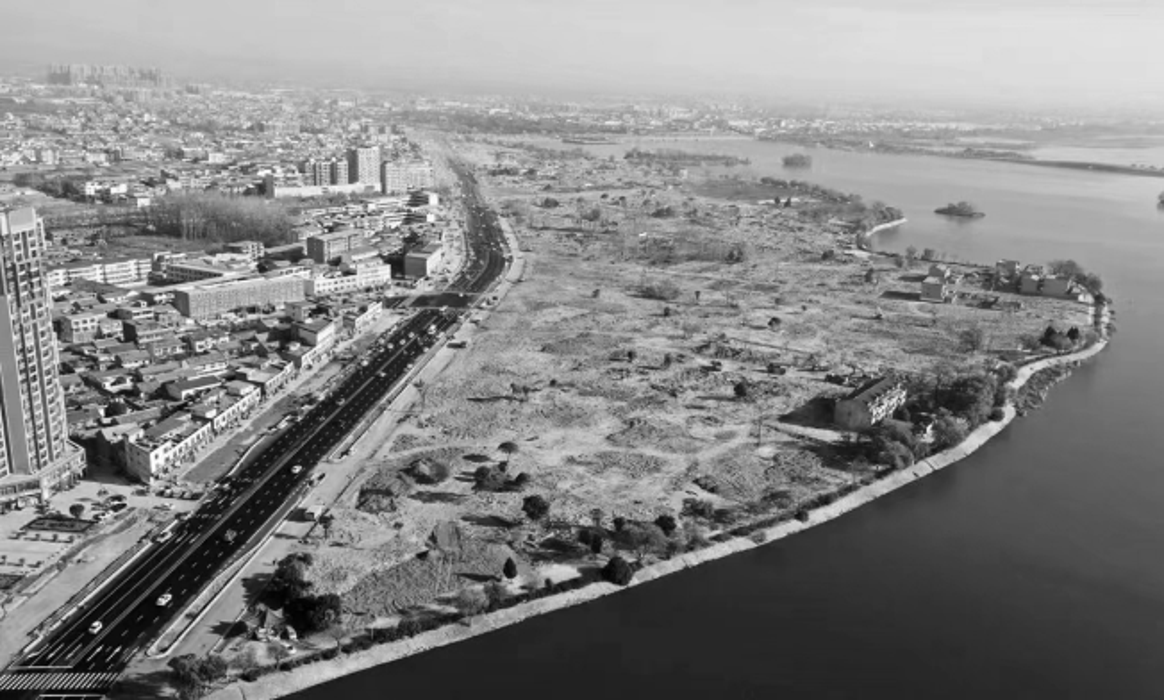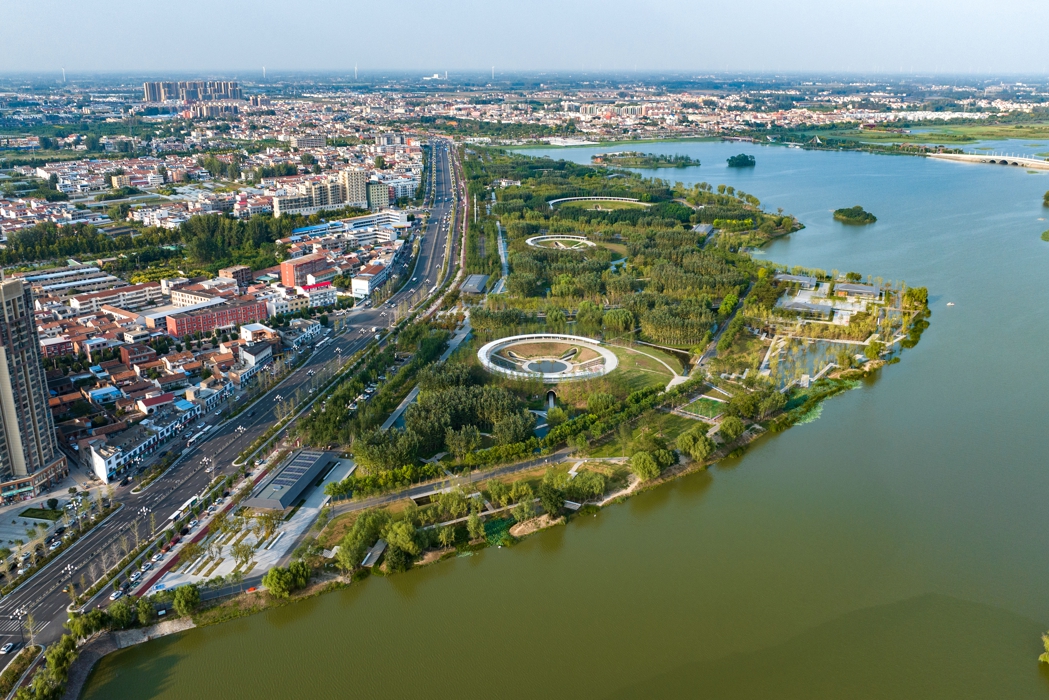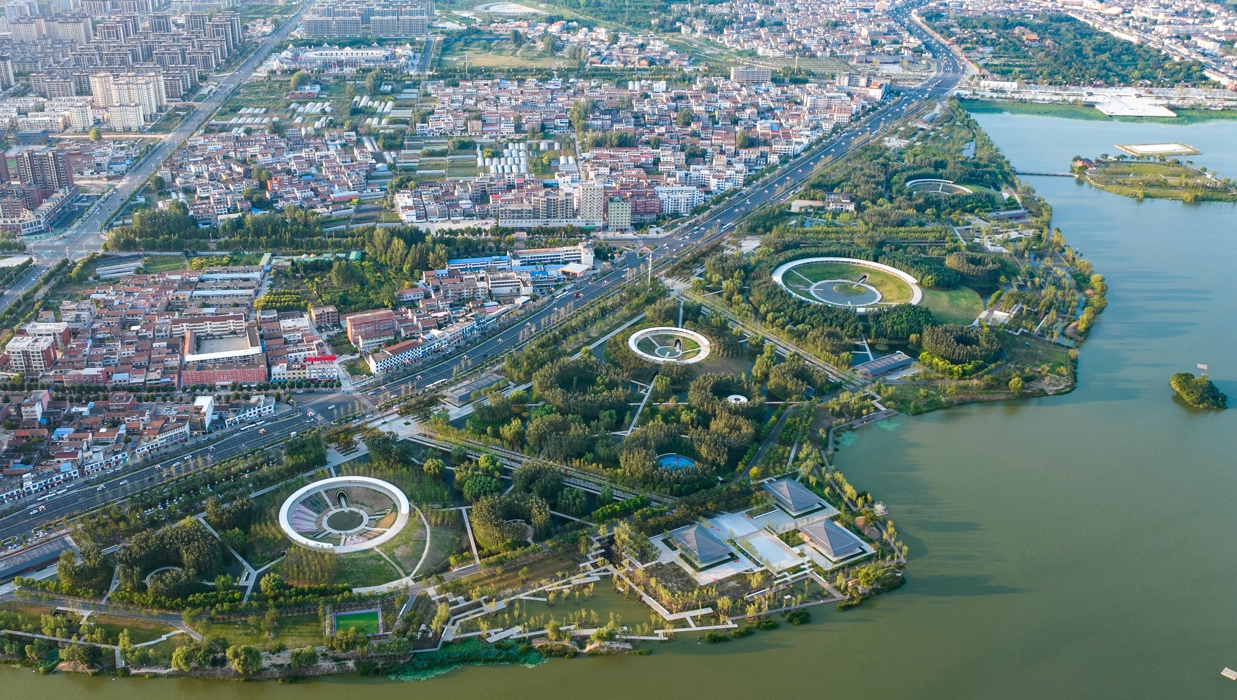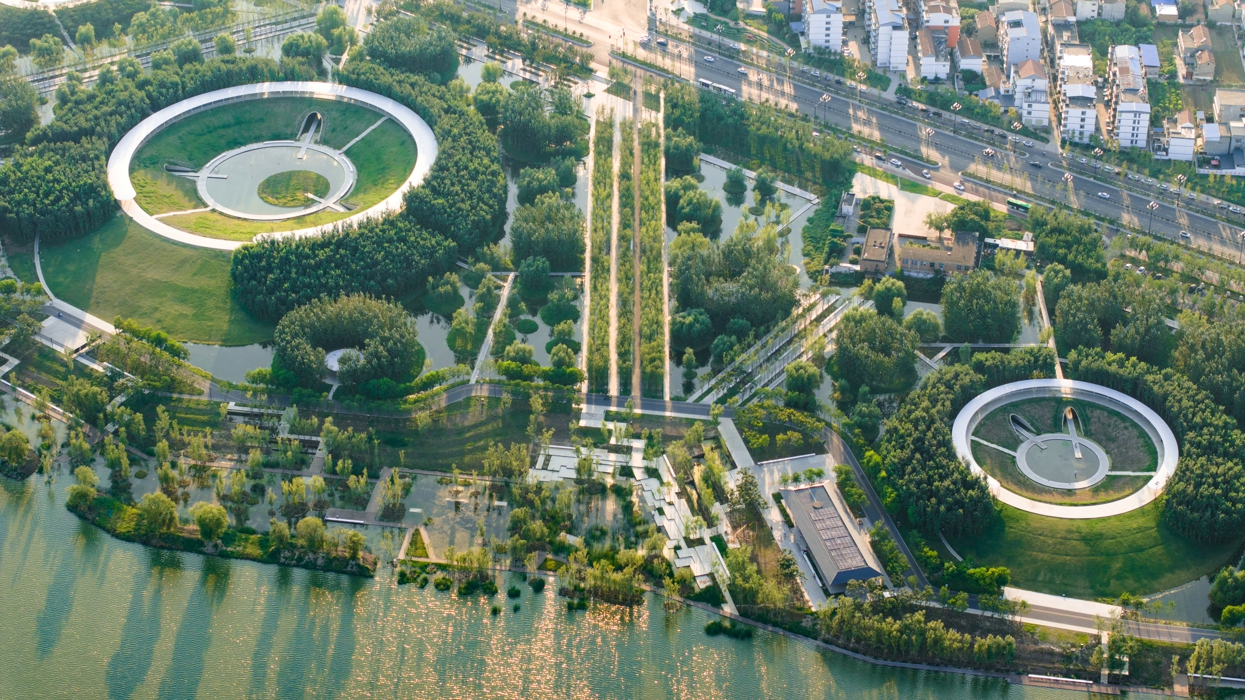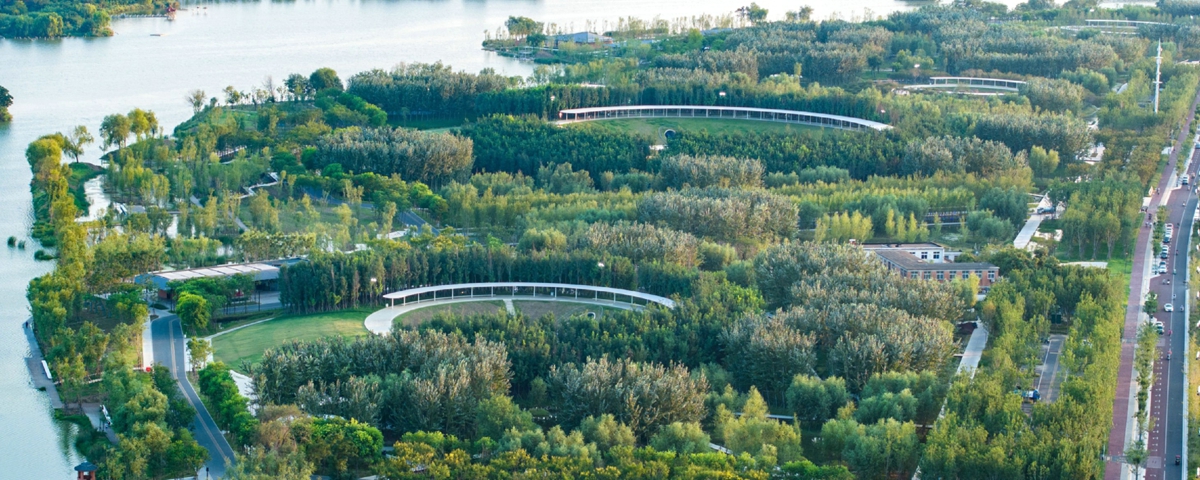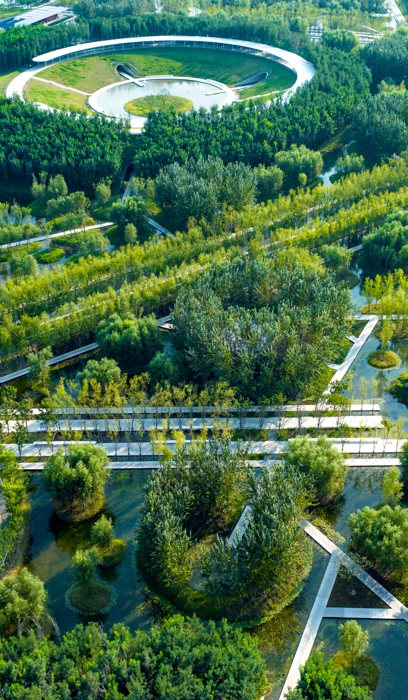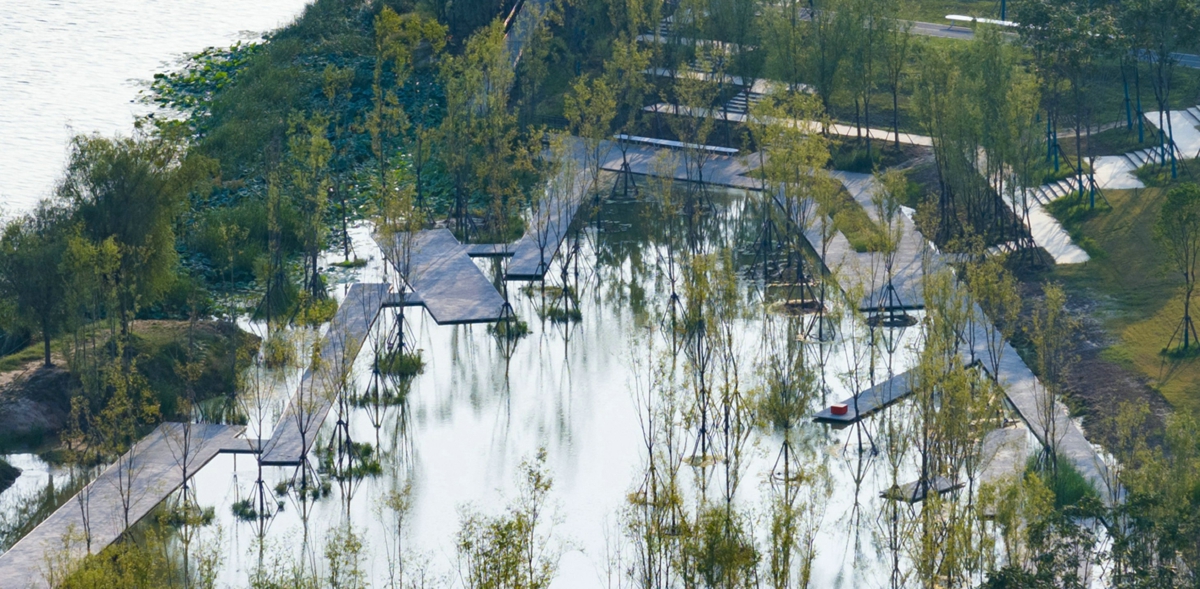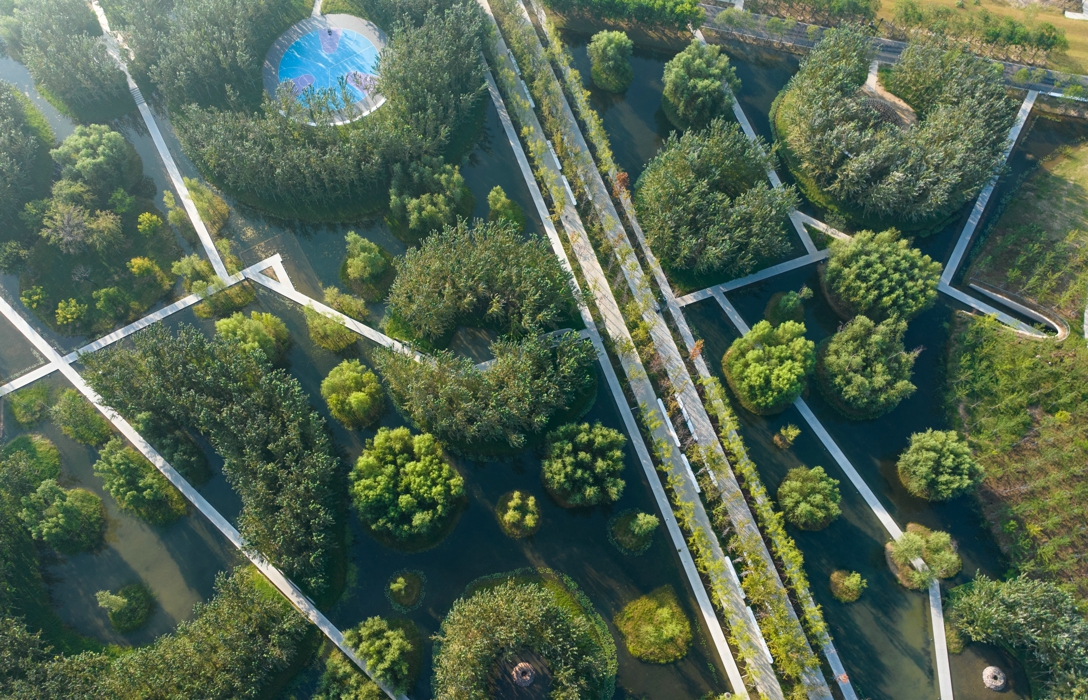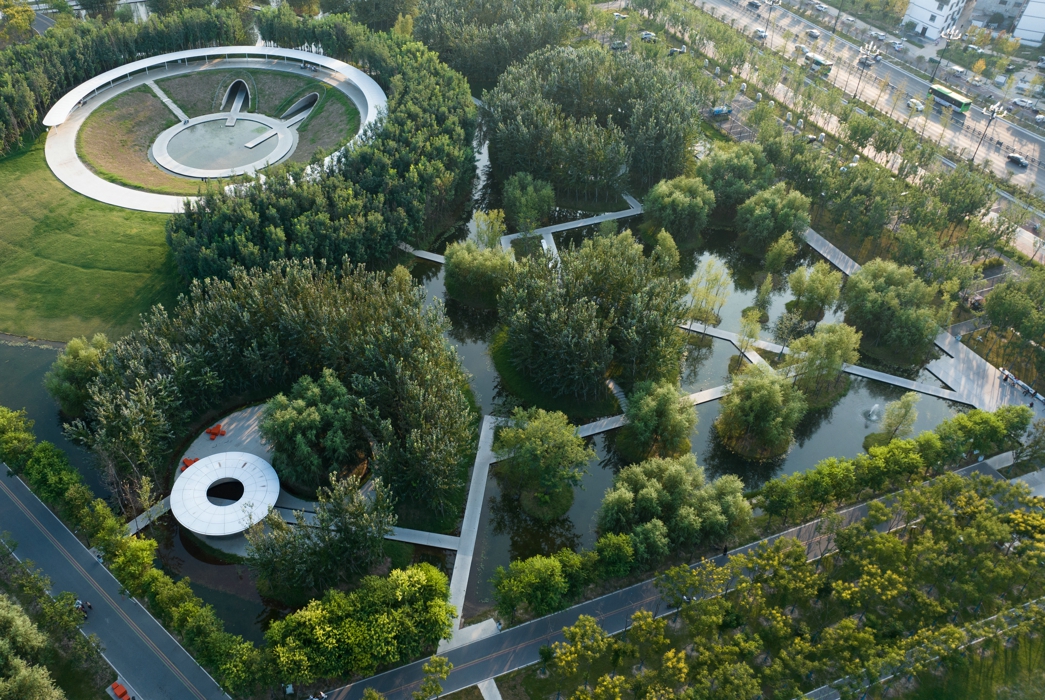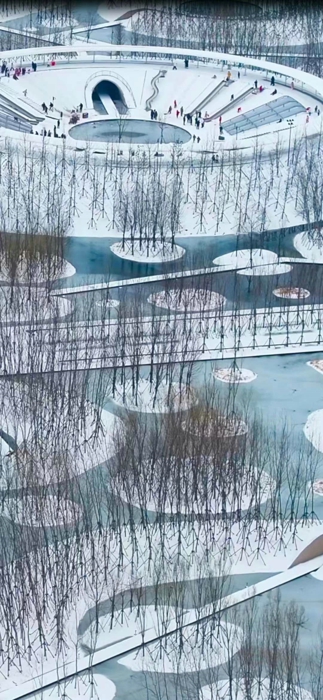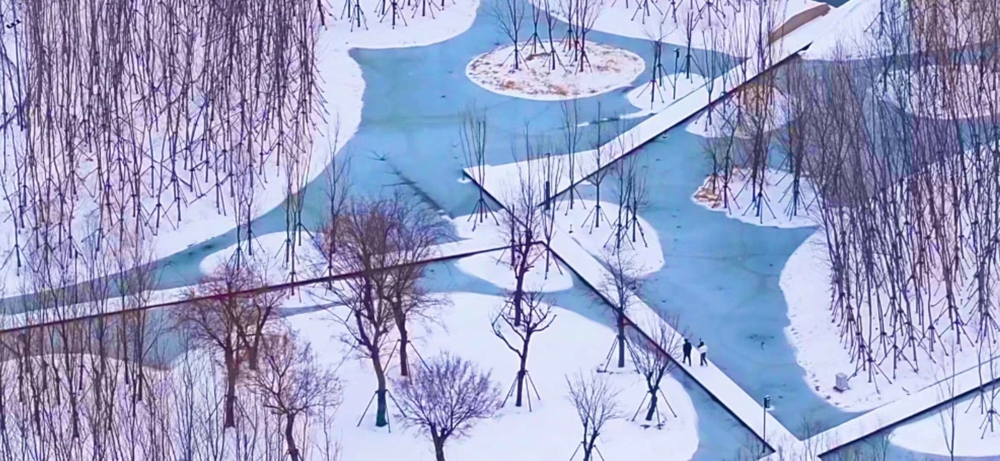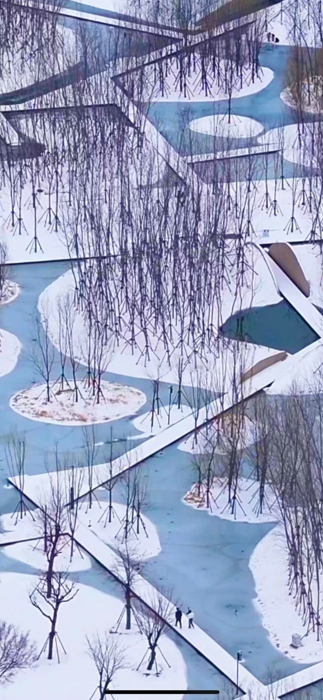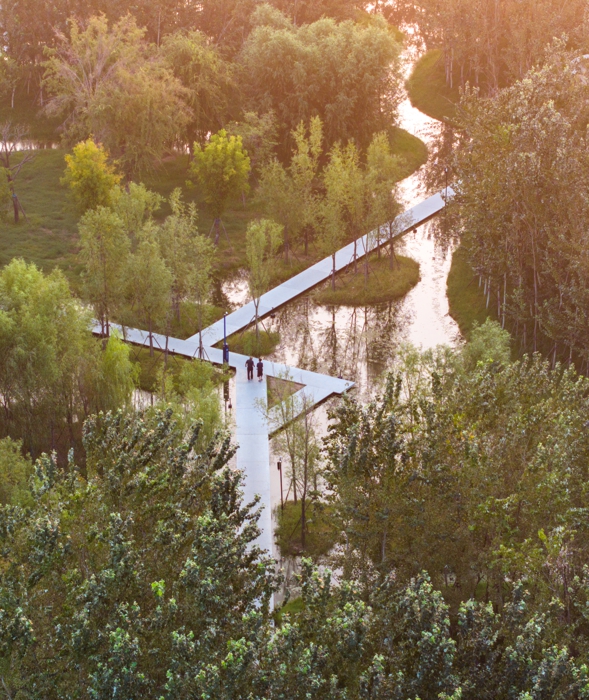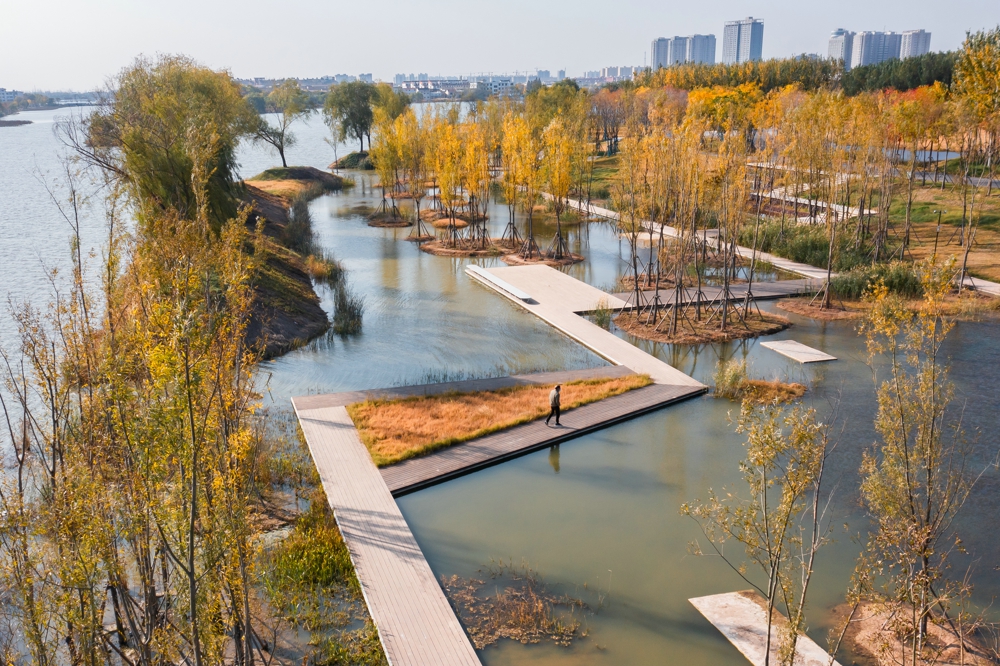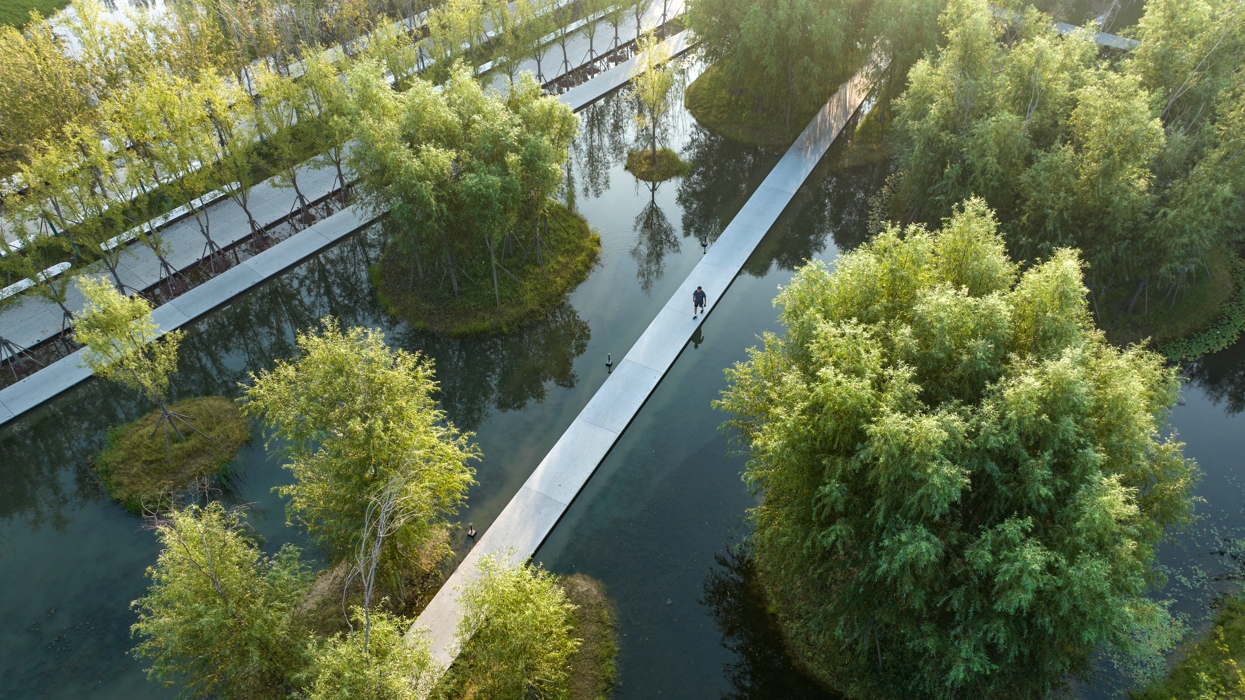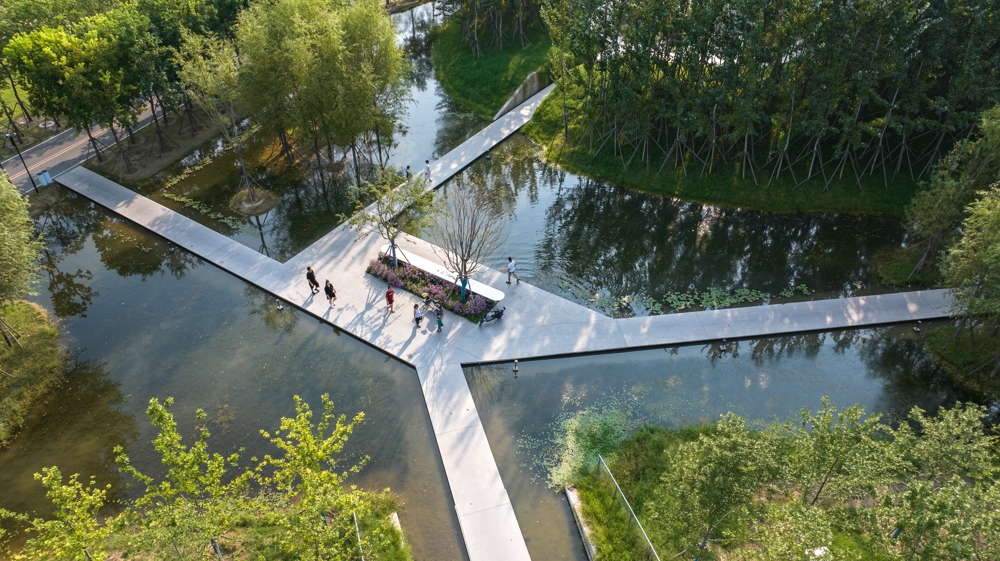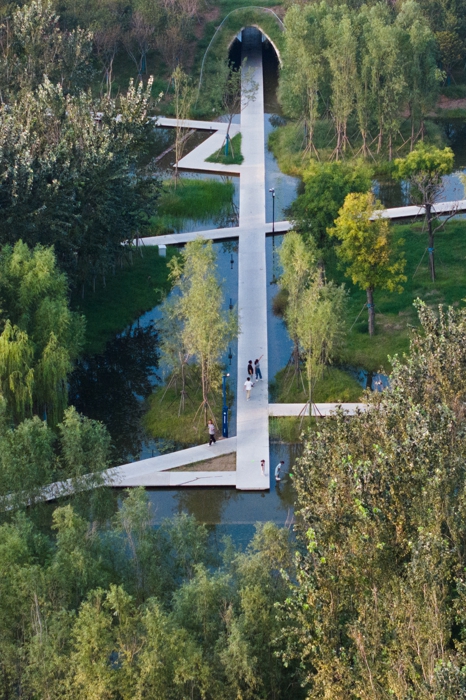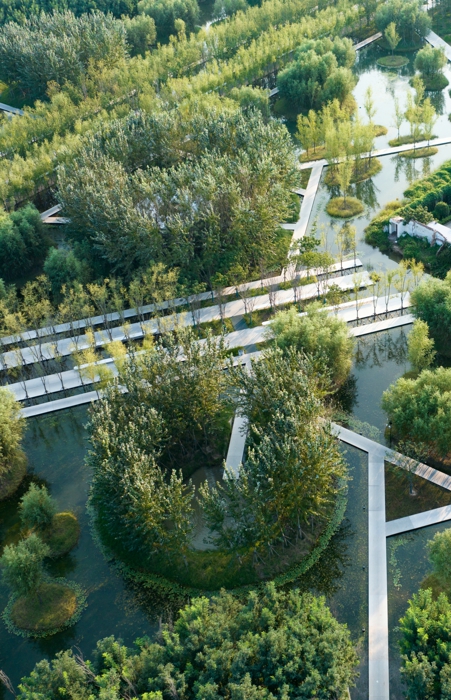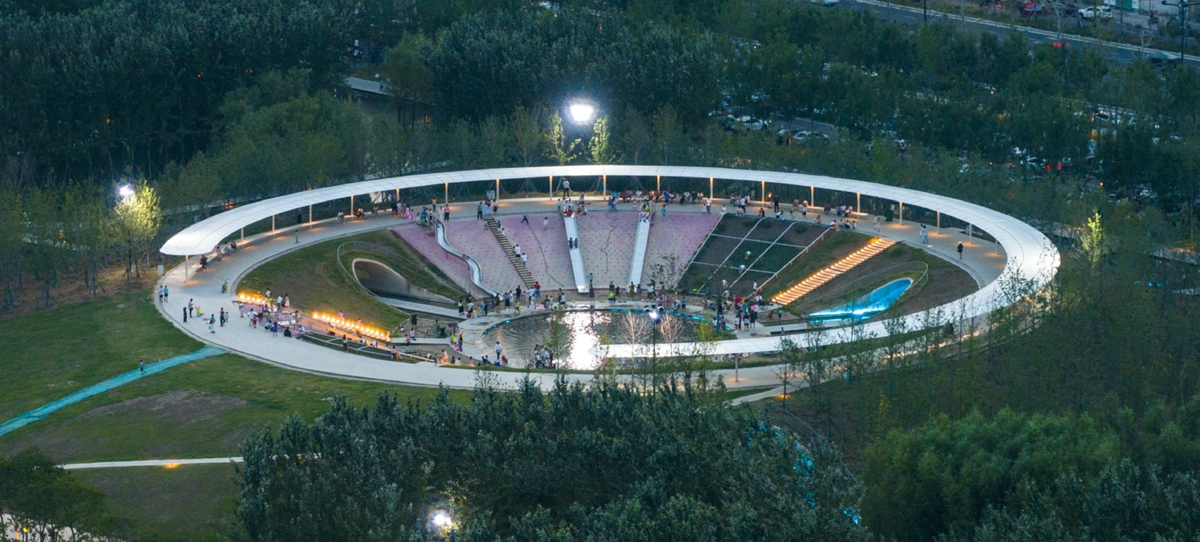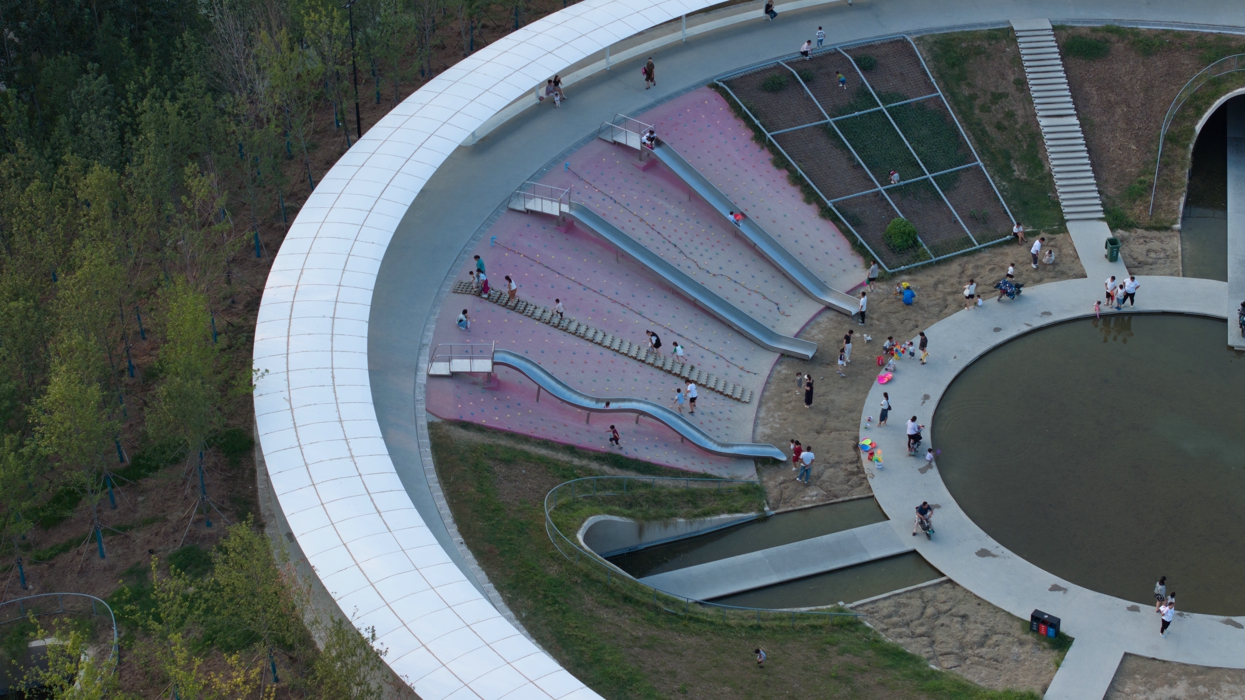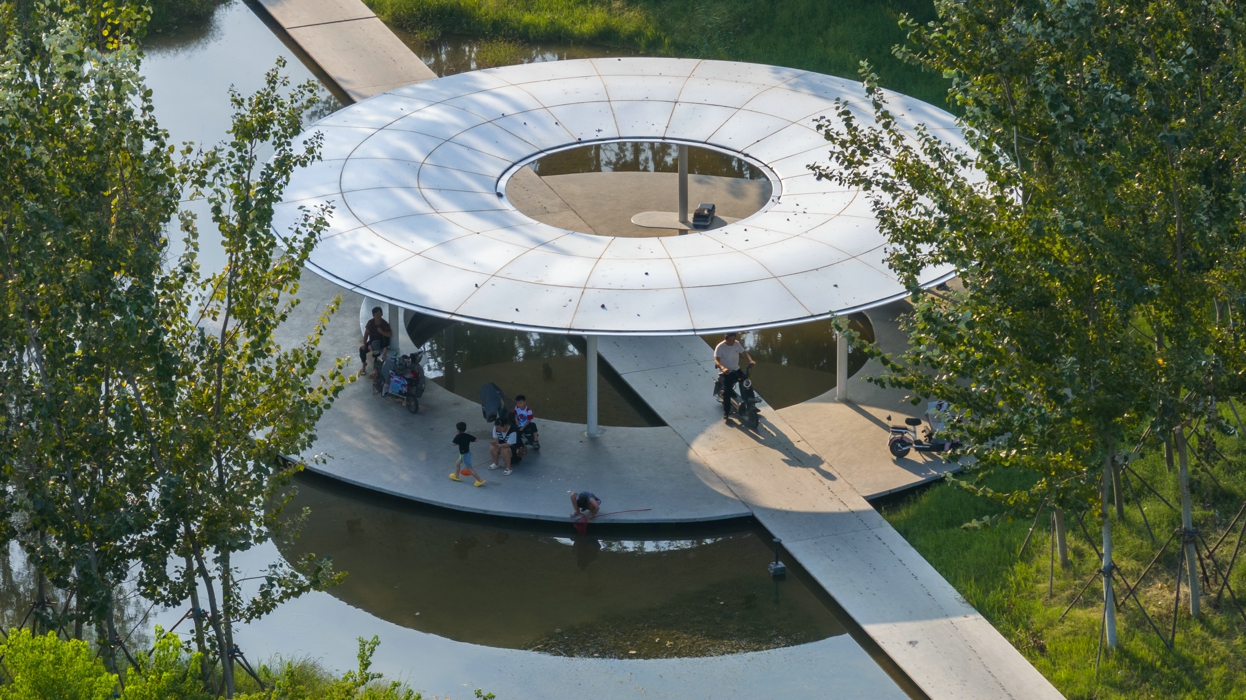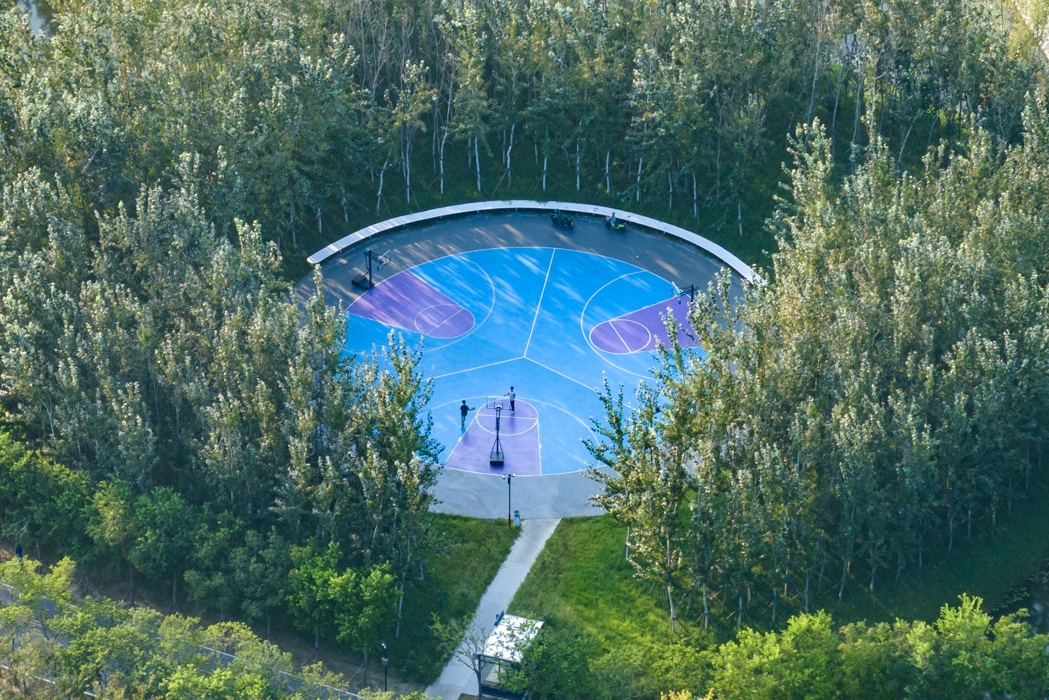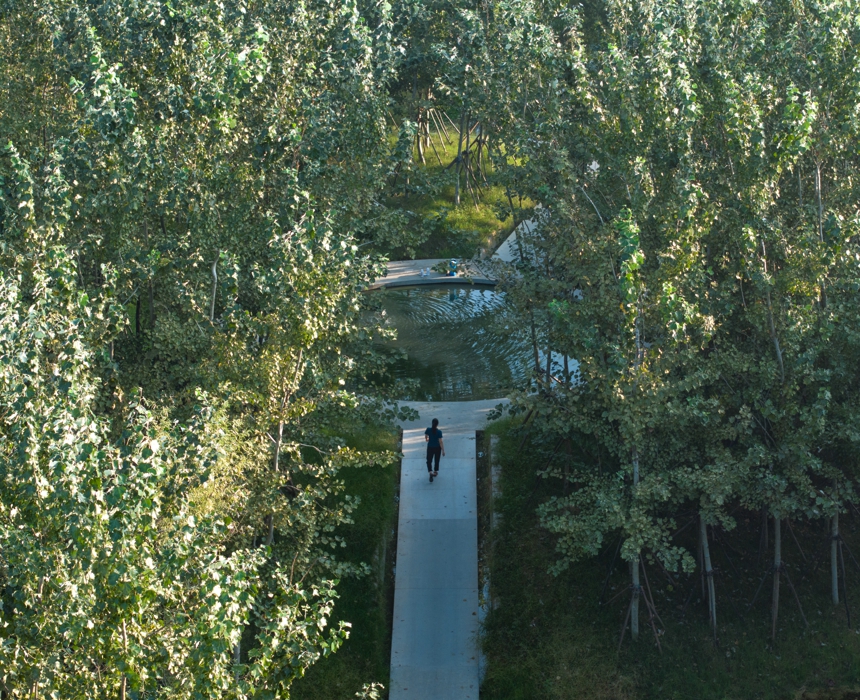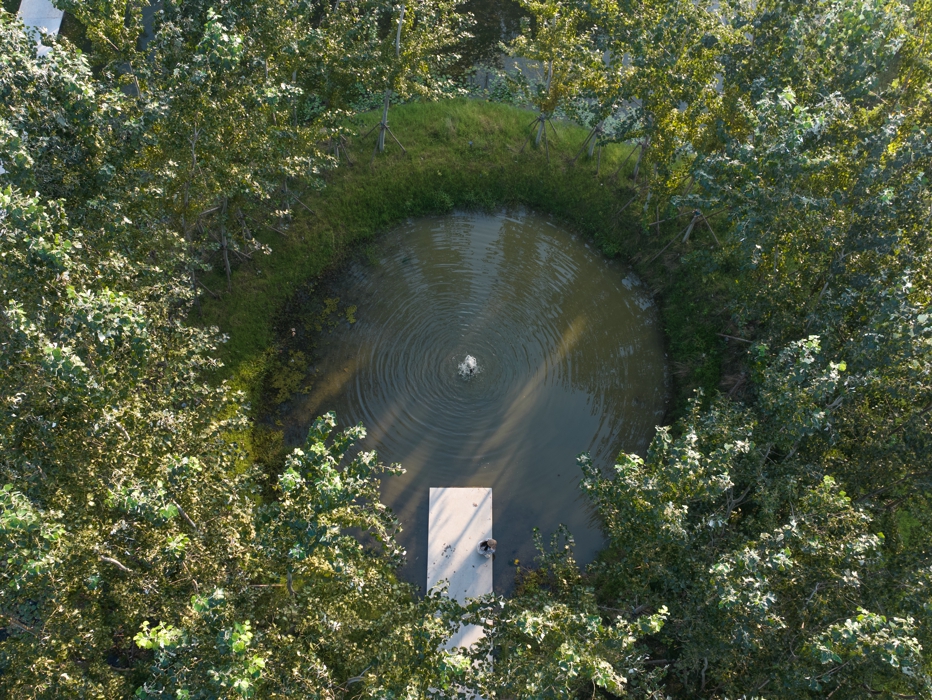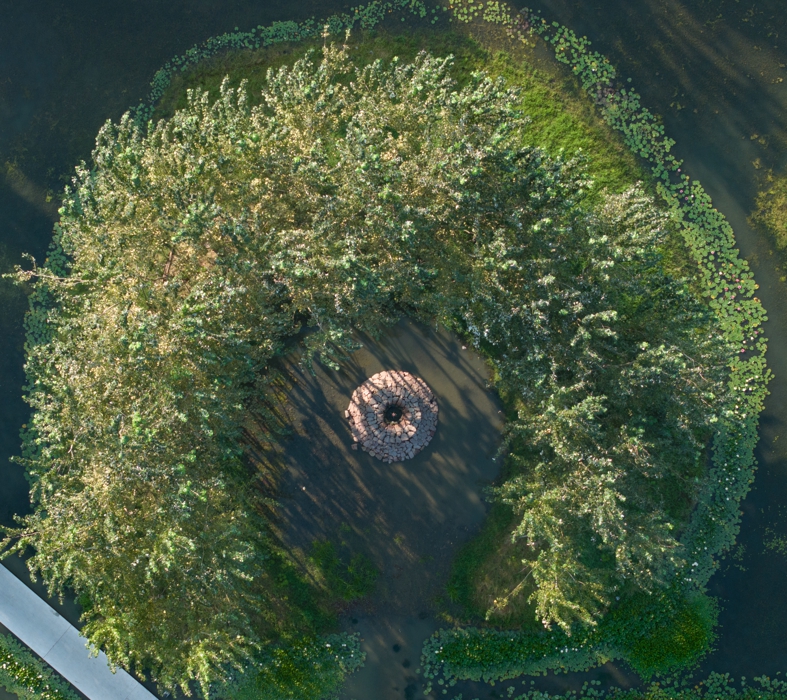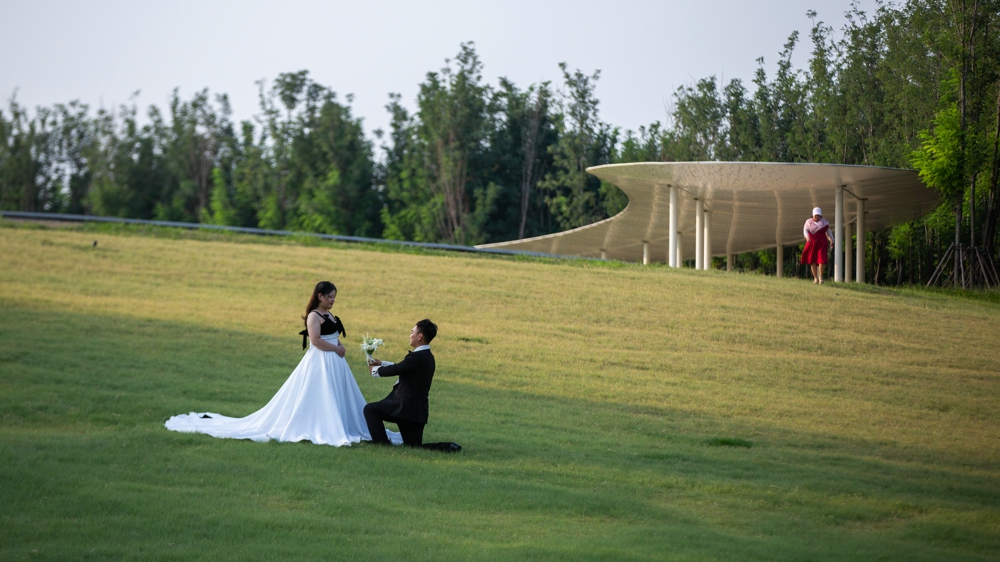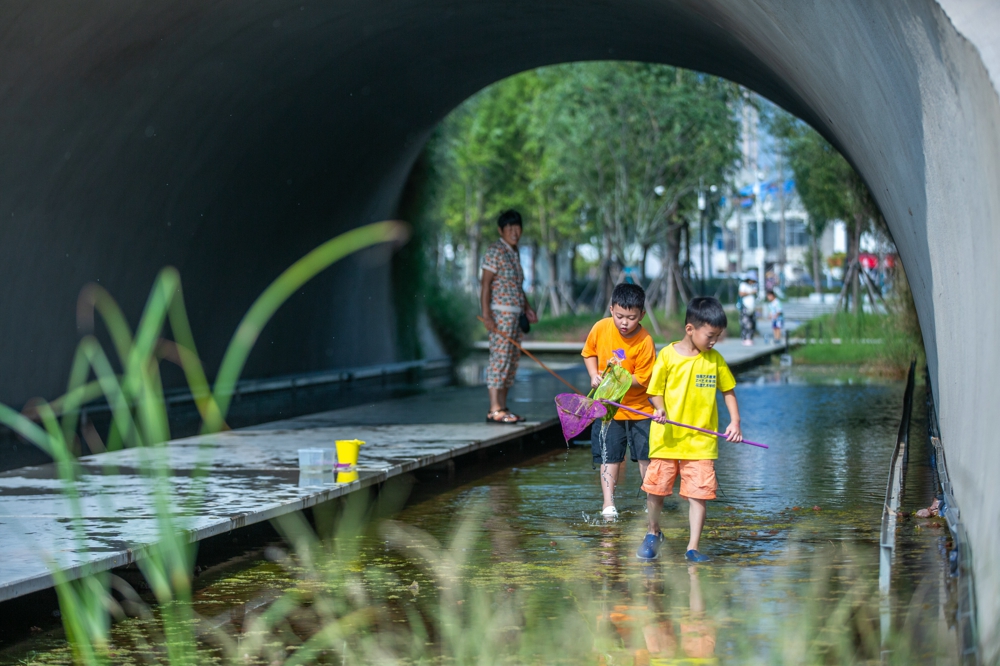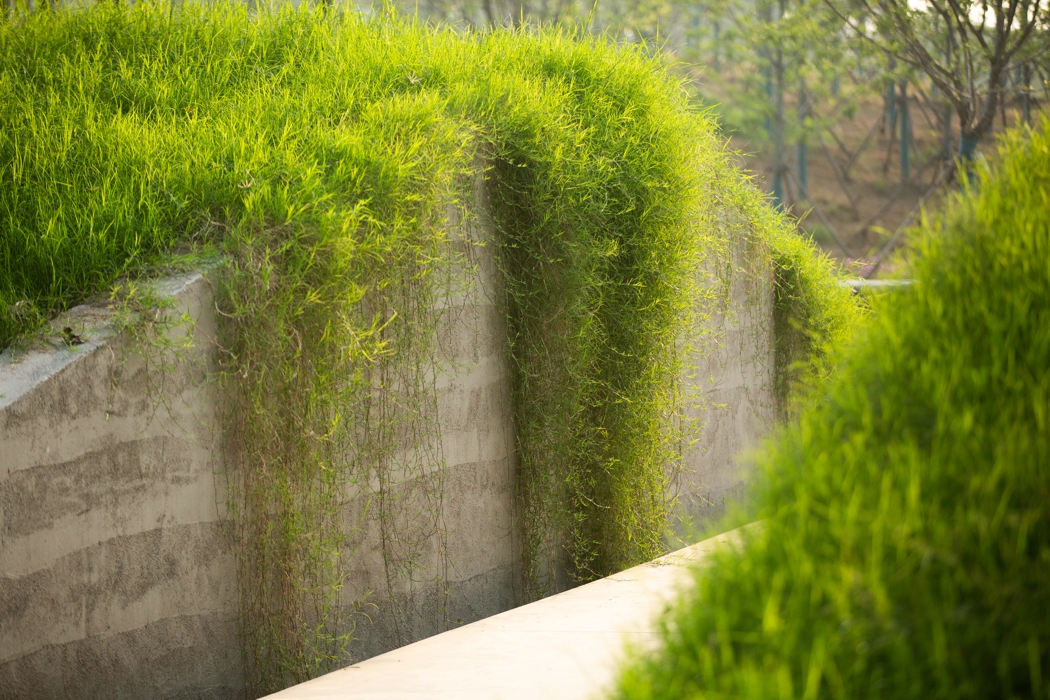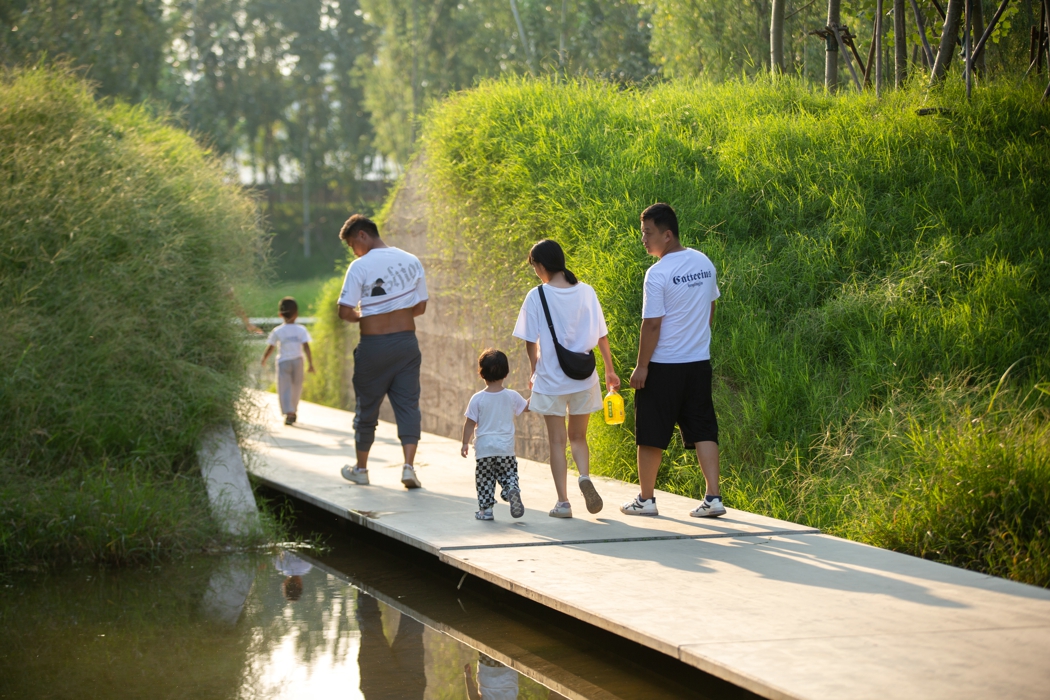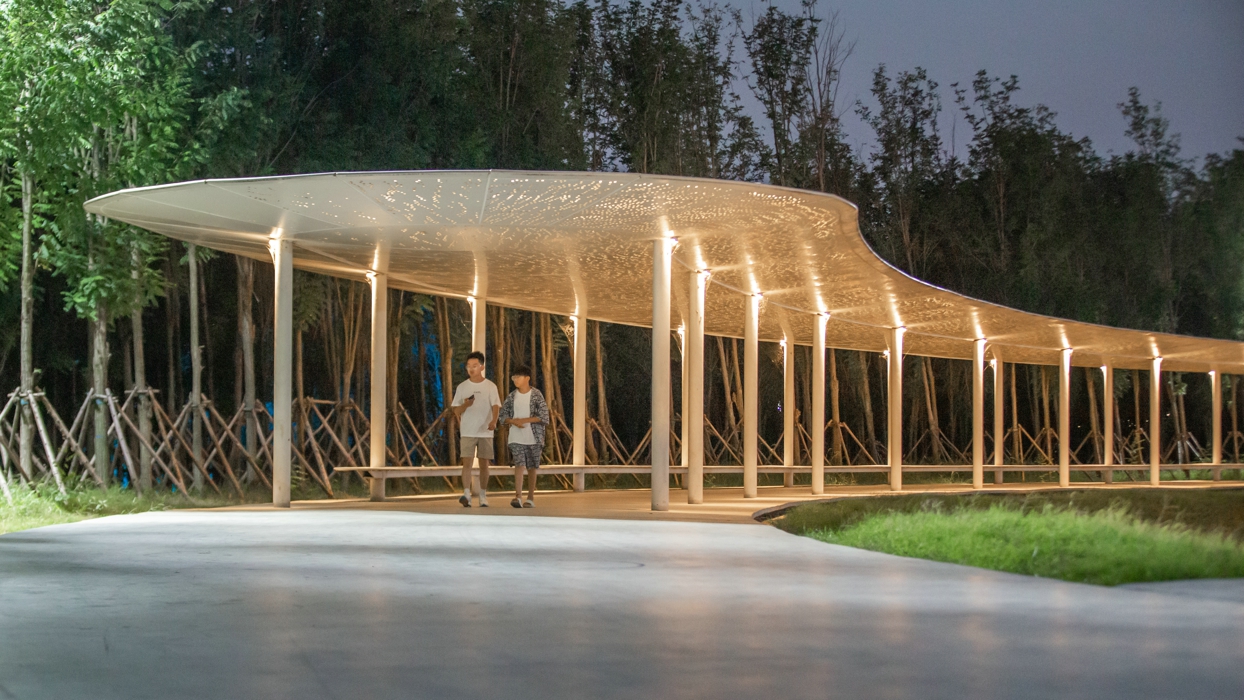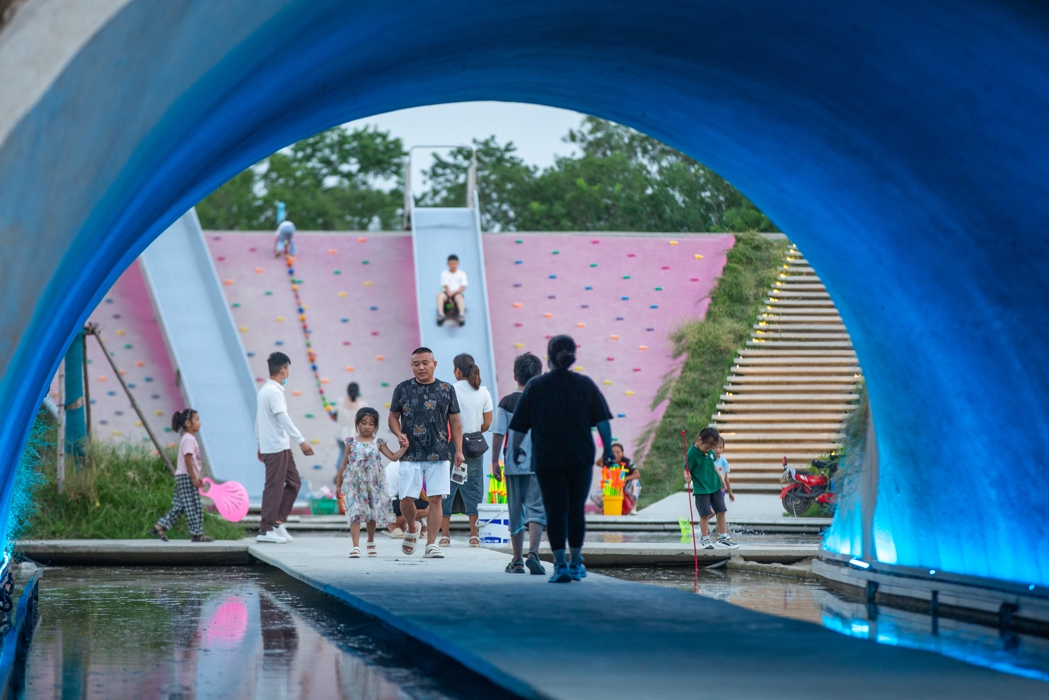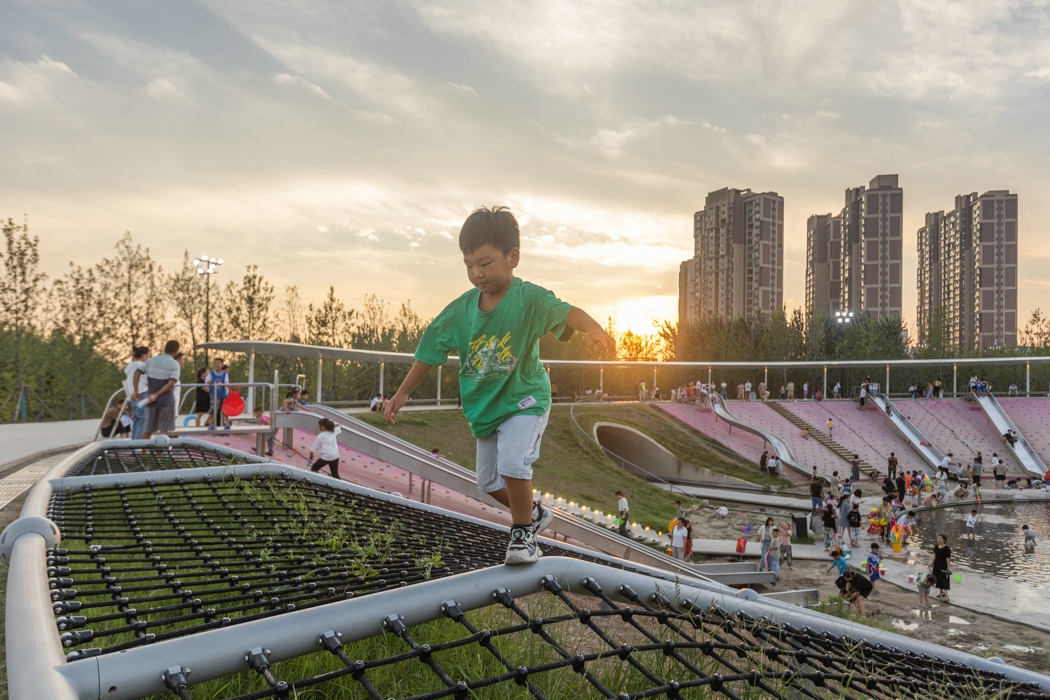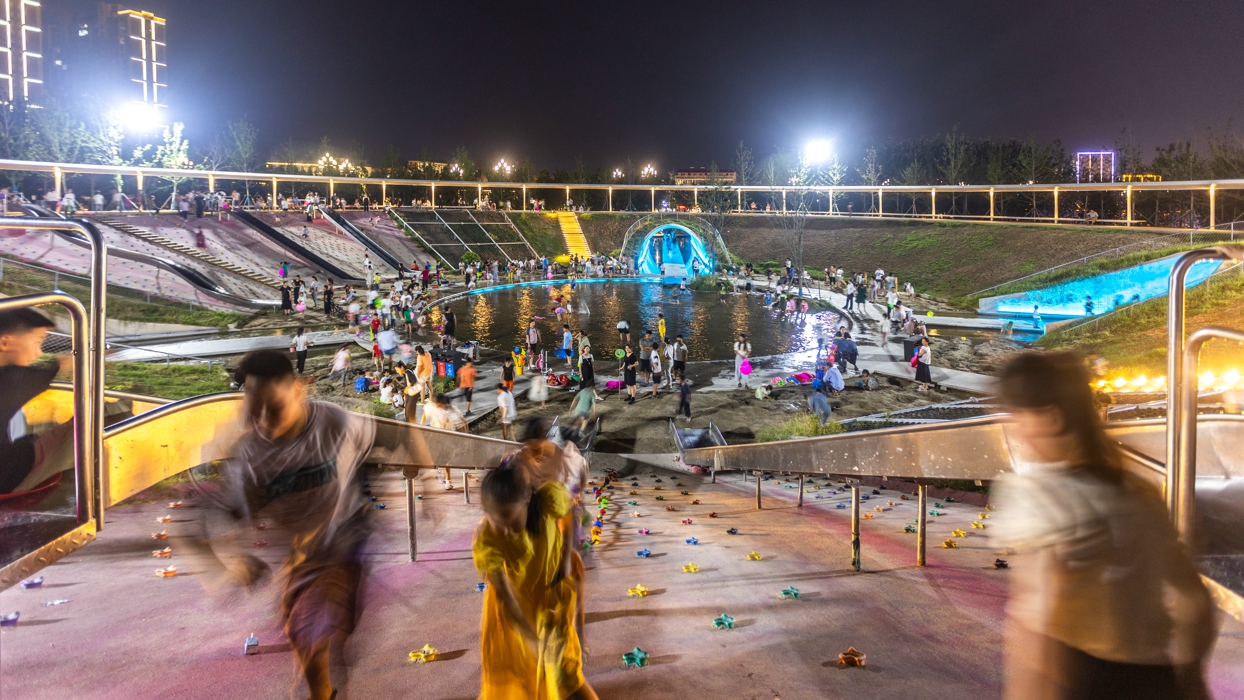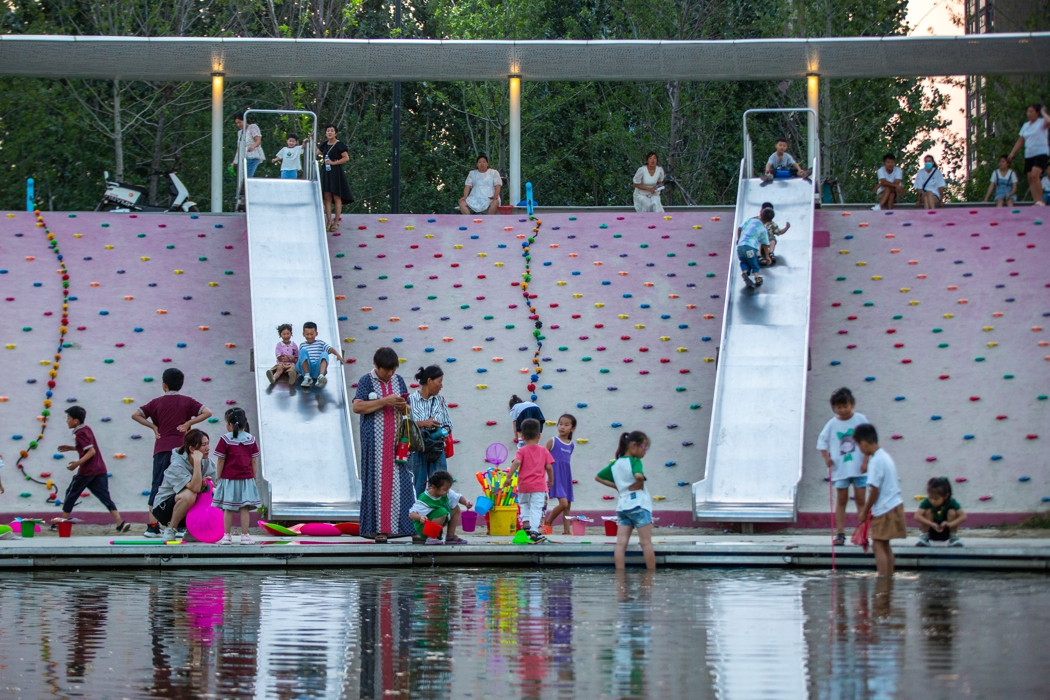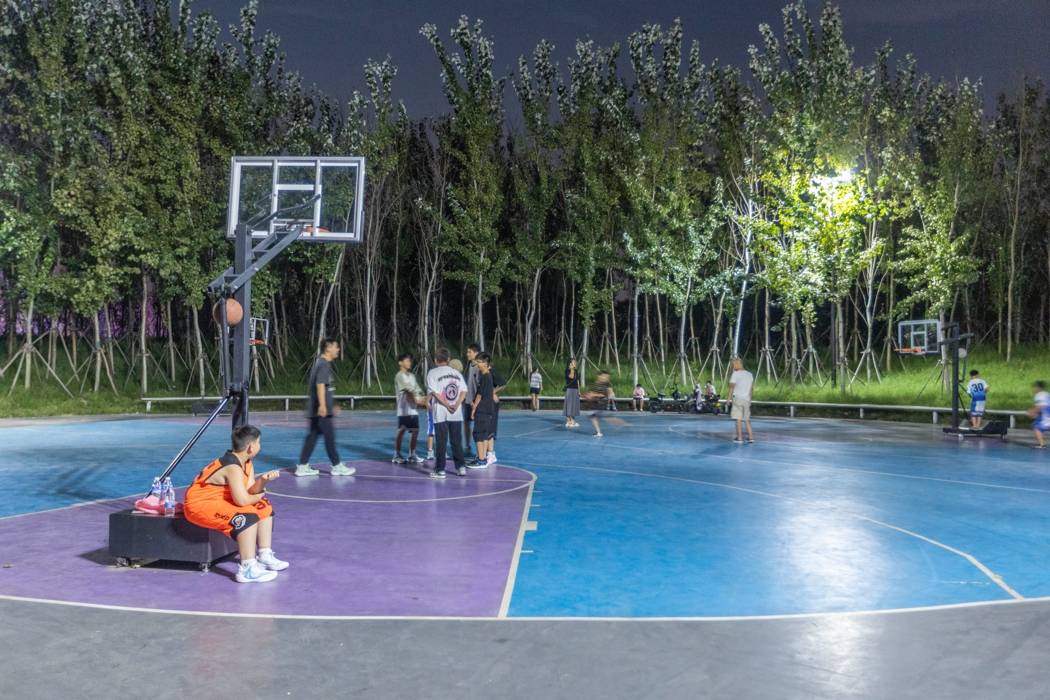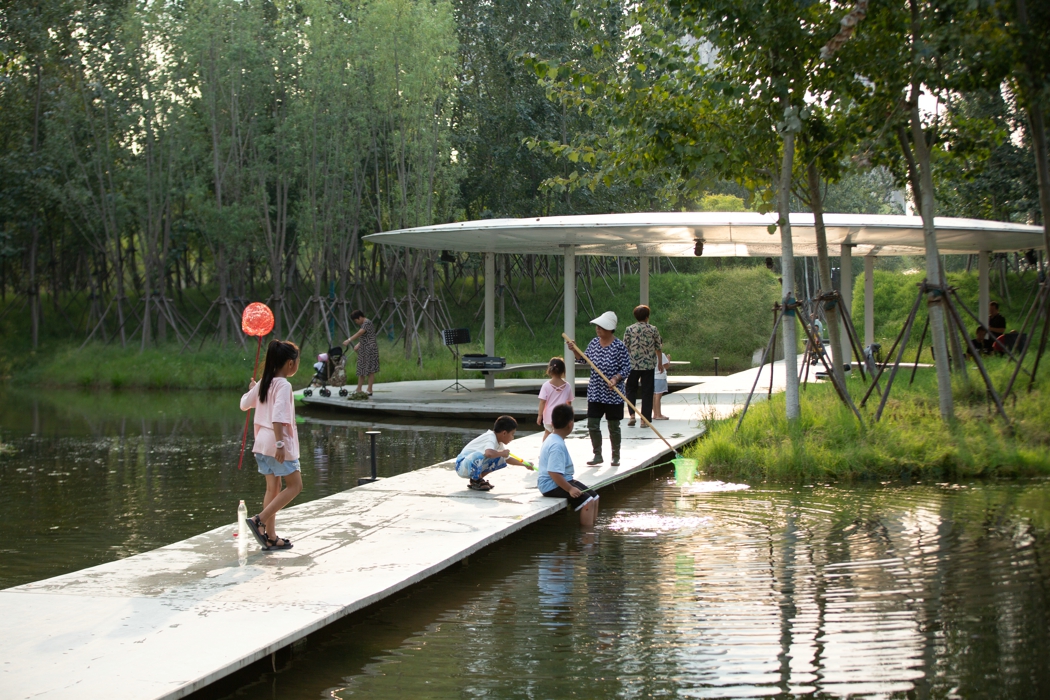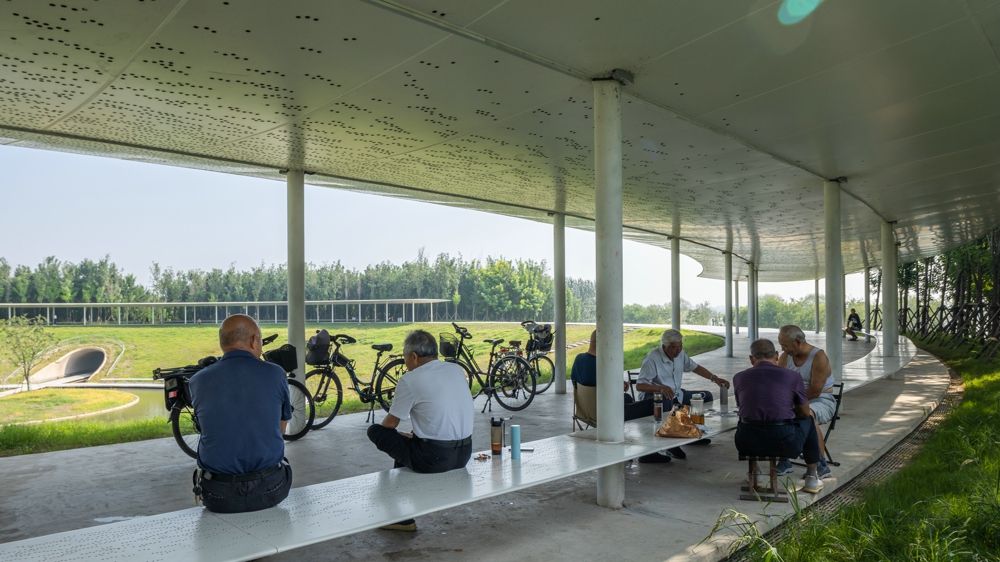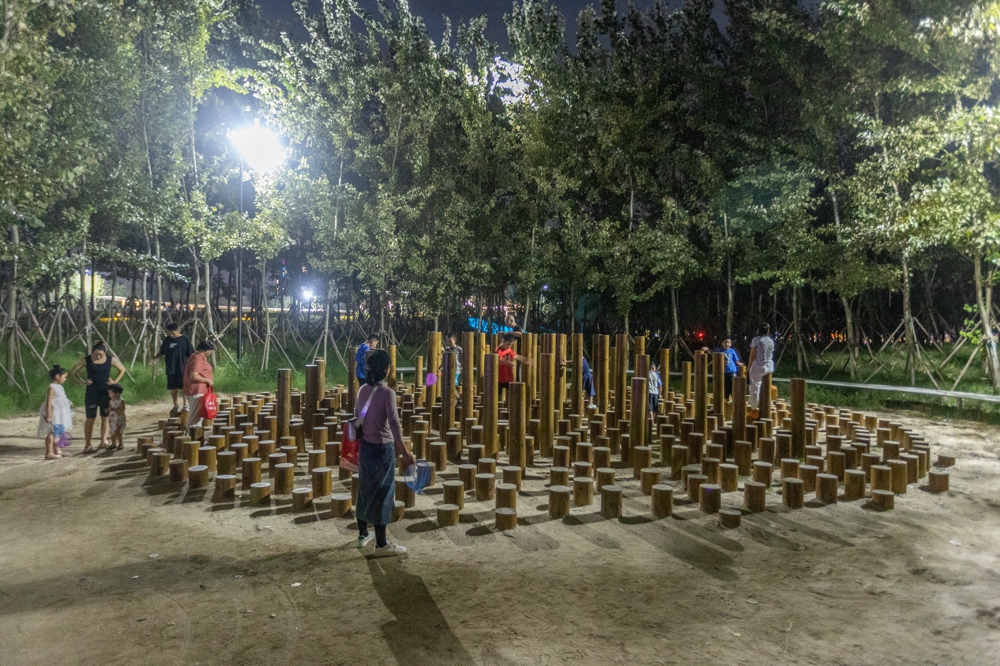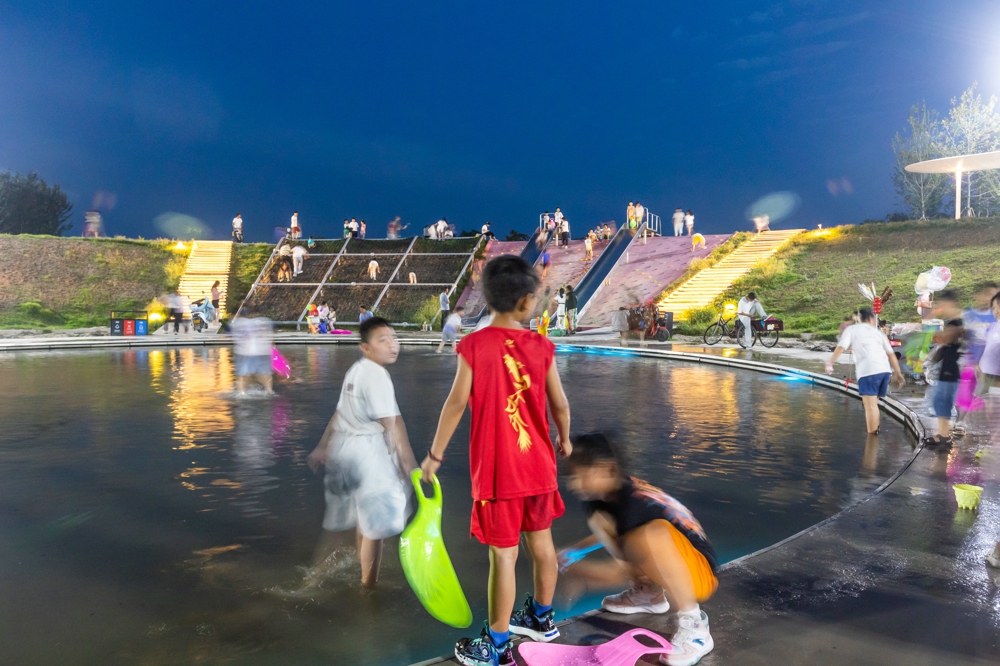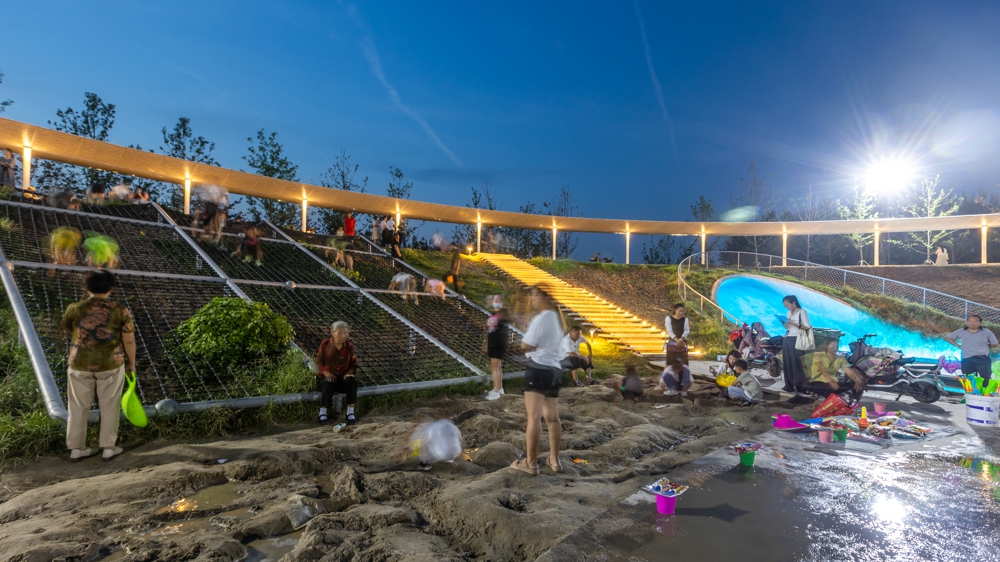Zhoukou Huaiyang Fuxi Cultural Park
Project Information
- Project Location:
- China Zhoukou, Henan
- Project Scale:
- 43 Hectares
- Design Time:
- December 2021
- Build Time:
- June 2023
- Client:
- Zhoukou Huaiyang Housing and Urban Rural Development Bureau
- Related Papers
Project Profile
1. Project Statement
The Huaiyang Fuxi Cultural Park project harnesses the natural topology of the area to engineer a water-resilient landscape. Utilizing the concept of a sponge city, the project aims to alleviate flooding risks in the ancient city and purify contaminated waters. Crater-shaped islands emerge as multifunctional spaces, serving the community's diverse needs while drawing inspiration from ancient Chinese cosmological symbols and the Eight Trigrams. These elements form a unique pattern language throughout the park, blending ecological sustainability with rich cultural narratives and social engagement.
2. Project Narrative
2.1 Context and Challenges
Located in Huaiyang, a district within Zhoukou City, Henan Province, this site boasts a storied past, tracing back to China's first mythical emperor some 6,500 years ago. Fuxi, a pivotal figure in Chinese mythology, is celebrated for contributions spanning the invention of music, hunting, domestication, the Chinese characters, and notably, the Bagua or "Eight Trigrams." This symbol set, foundational to Chinese cosmology, encapsulates the dynamic balance of opposing forces, deeply influencing philosophical thought. The site's proximity to the Fuxi Tomb, a national heritage site, underscores its cultural significance, drawing millions annually, especially during the Chinese New Year.
Historically buffeted by the Yellow River's floods and the vicissitudes of war, Huaiyang's landscape, particularly the Longhu (Dragon Lake), embodies centuries of adaptive resilience. However, recent urban expansion and informal settlements have compromised this balance, encroaching on the lake's capacity to manage flood risks and diminishing the area's cultural heritage integrity. In response, a transformative vision was set forth in 2021: to reclaim a 43-hectare site from neglect and encroachment, envisioning a public park that enhances flood resilience, meets community needs, and celebrates the area's rich historical tapestry.
2.2 Design Strategies and Solutions
Addressing the multifaceted challenges, the design strategy introduced innovative solutions:
(1) Creation of a Water-Resilient Sponge Landscape: Utilizing on-site cut and fill, 860,000 cubic meters of dirt and debris were recycled to create a water-resilient landscape of islands, increasing the area's stormwater regulation capacity. This design draws inspiration from ancient celestial constellation diagrams, mirroring the chaotic beauty of the cosmos and honoring Fuxi’s contribution to the creation of the Bagua, or the "Eight Trigrams." This innovative landscape, comprising numerous islands adorned with flood-resistant vegetation, is engineered to manage around 1 million cubic meters of stormwater. This significantly bolsters the flood resilience of the ancient city and Dragon Lake, transforming them into a model of climate adaptation and environmental sustainability.
(2) Innovative Pocket Gardens with Thematic Craters: Among the myriad of simple verdant isles, 27 distinct islands have been meticulously crafted into themed craters, each hosting a variety of programs and activities. Four major craters are designated for unique attractions such as a children’s playground, an amphitheater, a basketball court, and a tranquil water garden. Additional smaller craters are dedicated to fountains, art installations, and more, enriching the park with an array of exploratory and interactive experiences. Winter transforms the crater islands landscape into picturesque arena for skiing and ice skating.
(3) Expansive Network of Boardwalks: A comprehensive system of boardwalks weaves through the park, connecting the celestial isles. These pathways offer an enchanting journey above water and beneath tree canopies, occasionally threading through craters via tunnels or gates. Water depth by the boardwalks is kept at a safe level per regulations, eliminating the need for handrails.
(4) Advanced Water Purification System: Addressing the challenge of lake and urban runoff pollution, a sophisticated water treatment system has been implemented. This system channels water from the lake and urban areas through a constructed wetland for purification, before reintroducing it into Dragon Lake. The design of the water purification routes is meticulously integrated with the layout of a matrix of islands and connecting boardwalks. This process is capable of purifying approximately 11,500 tons of water daily, ensuring the sustainability and cleanliness of the aquatic environment. Solar panels on the roof supply energy for the bio-water purification process
(5) Native Trees Echoing Ancient Folklore: The selection of flora for the park draws inspiration from ancient folk songs, particularly "The Book of Songs: Chen Feng," which dates back over two millennia. Poplar and willow trees, frequently celebrated in these songs, dominate the landscape, creating a living homage to cultural heritage. The planting design not only enhances the park’s aesthetic but also fosters a deep connection with historical traditions and the natural world.
This elaborated strategy underlines a comprehensive and thoughtful approach to creating a resilient, engaging, and historically resonant urban park that showcases innovative environmental solutions while celebrating the rich cultural legacy of Huaiyang.
3. Concluding Reflections
The Fuxi Cultural Park stands as a testament to the human capacity to navigate and harmonize with the forces of nature and change. It offers a space where history and innovation converge, inviting exploration and contemplation. This project not only addresses environmental and social needs but also serves as a conduit for cultural dialogue, connecting past, present, and future in a living landscape.
